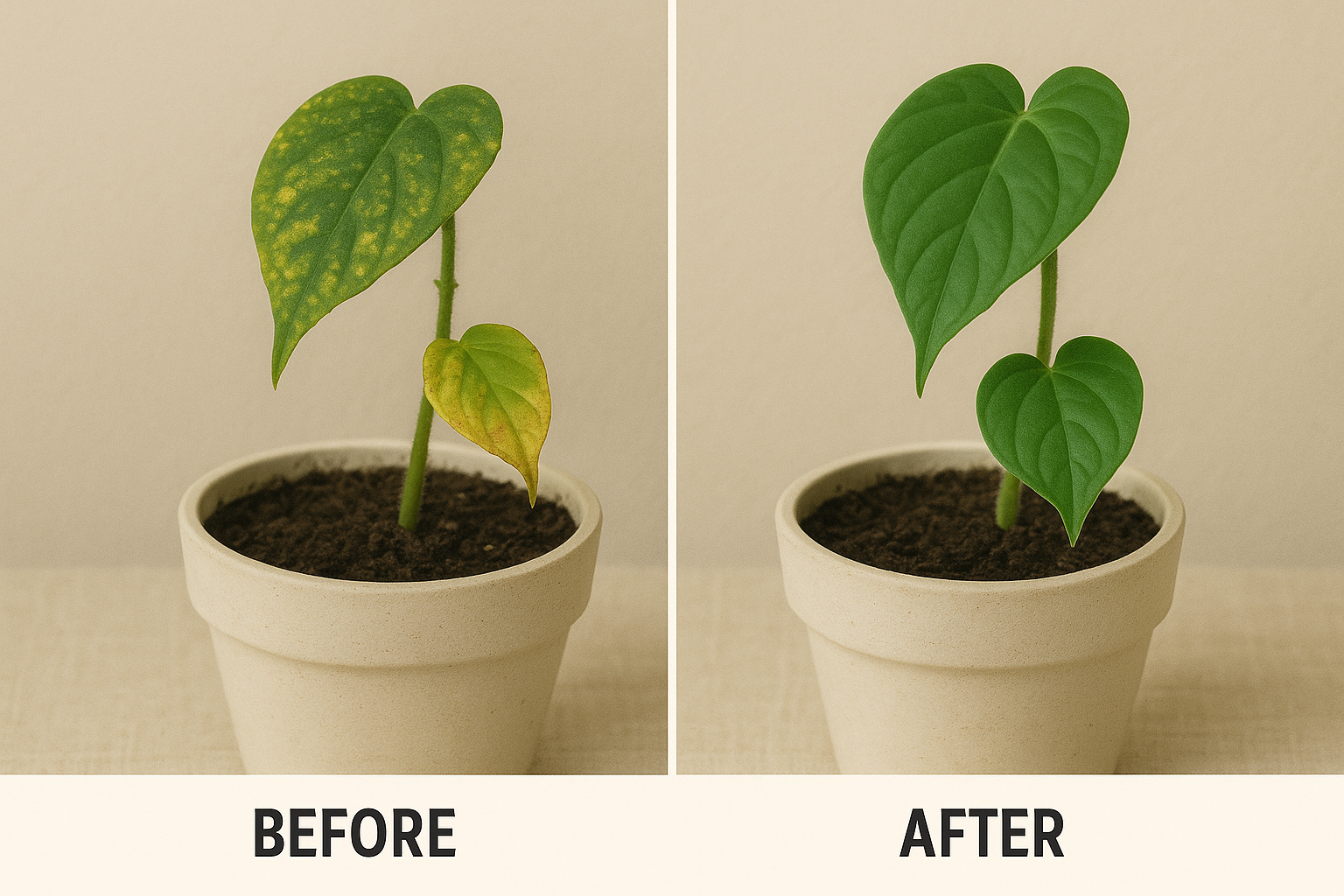How to Deal with Spider Mites on Your Plants: A Complete Guide
By The Jungle Room Plant Co.
Spider mites can be a nightmare for plant parents. These tiny pests are almost invisible to the naked eye but can cause severe damage to your beloved plants if left unchecked. Whether you’re dealing with them for the first time or you’ve been battling them for a while, this guide will help you understand how to identify, treat, and prevent spider mite infestations.
What Are Spider Mites?
Spider mites are tiny arachnids, often no bigger than a pinhead. Despite their size, they can quickly wreak havoc on your plants by feeding on plant cells, causing leaves to turn yellow, dry out, or develop speckled patterns. In severe cases, spider mites can lead to plant death.
Common Signs of Spider Mite Infestation:
Yellowing or stippling on leaves: Leaves develop small, pale dots, and the damage may look like freckles.
Fine webbing: You may notice a delicate webbing between leaves or around stems.
Leaf drop: In severe cases, spider mites cause leaves to curl, dry out, and fall off.
Dusty or gritty texture: A rough texture on the leaves, often caused by the mites’ feeding activity.
How to Identify Spider Mites
To identify spider mites, look closely at the undersides of leaves using a magnifying glass. The pests are often red, yellow, or greenish and can move quickly across the surface. If you notice webbing or tiny specks of damage, it's likely time to inspect for spider mites.
How to Treat Spider Mites
Don’t panic—spider mites can be controlled, and your plants can recover! Here are the most effective treatment methods:
1. Isolate the Infected Plant
Spider mites spread quickly, so the first step is to isolate the infected plant from your other plants to prevent the infestation from spreading.
2. Rinse the Plant
One of the easiest ways to remove spider mites is by hosing down the affected plant. Use a gentle spray of water to wash the undersides of the leaves. This will help dislodge the mites, though it won’t completely eliminate them.
3. Use a Natural Insecticidal Soap or Neem Oil
Insecticidal soaps and neem oil are excellent natural treatments for spider mites. Spray the leaves thoroughly, focusing on the undersides where the mites like to hide. Reapply every 7-10 days for the best results.
Neem Oil: Mix 1-2 tablespoons of neem oil with water in a spray bottle and apply directly to affected areas.
Insecticidal Soap: Follow the directions on the label for best results.
Both of these treatments disrupt the mites’ feeding and reproductive cycles, helping to control the infestation.
4. Apply Diatomaceous Earth
If you're dealing with a severe infestation, diatomaceous earth can help. Sprinkle it lightly on the topsoil and around the plant base. This natural powder is harmless to humans and pets but deadly to pests like spider mites.
5. Use Predatory Mites
For a more natural approach, consider introducing predatory mites into your home. These beneficial insects feed on spider mites and can help reduce their population over time.
Conclusion: Don’t Let Spider Mites Win!
Spider mites can be a challenge, but with the right approach, you can easily get them under control and keep your plants thriving. By identifying the signs early, using effective treatments like neem oil or insecticidal soap, and preventing future infestations, you’ll protect your plants from these tiny invaders.
Stay vigilant and keep your plant collection healthy—spider mites won’t stand a chance!




